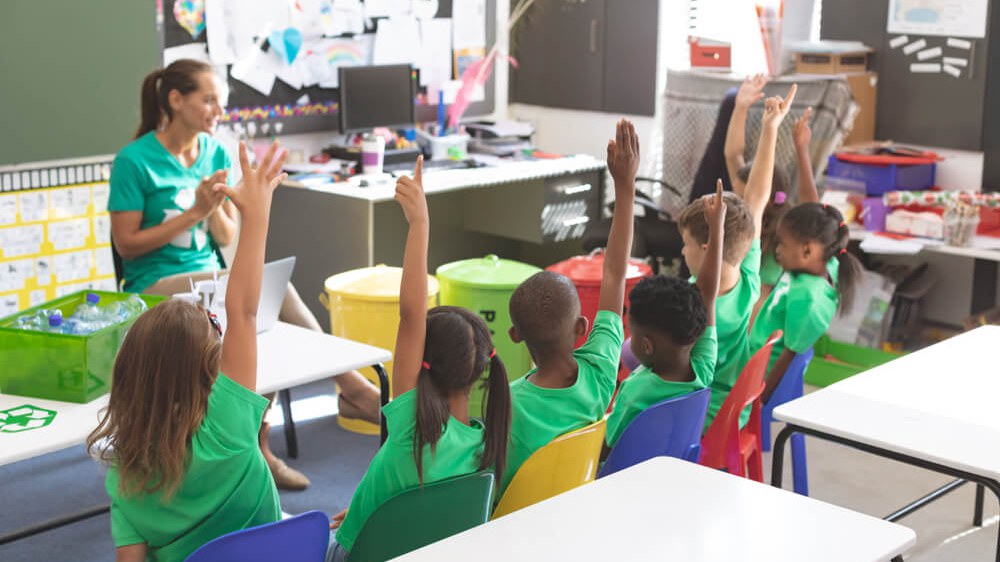As mathematics teachers, we’re used to teaching facts, formulas, and procedures. But in a world changing faster than ever, that’s not the only knowledge we want our students to leave with.
Instead it’s on us to develop transferable soft skills like collaboration, communication, and problem-solving.
But how do we actually teach these things?
That’s the question we’ll answer in this article, but before we do, a recap:
What are soft skills?
Soft skills are general competencies students can employ in diverse situations and different subjects.
Take communication, for example. A student might be a strong communicator in every subject, regardless of how their marks differ across the board.
This is the opposite of a hard skill, which is a subject-specific competency. Fractions, multiplication, and decimals in maths, for example.
The catch is – soft skills are harder to teach, but it can be done if you make them explicit in your classroom.
Here’s how you do that for three key soft skills.
1. Collaboration
Whenever you run a collaborative activity, you’re almost guaranteed to see the following personalities emerge.
- The student who ignores the rest of the group and does their own thing.
- The student who stays silent and lets everyone else do the talking.
- The dictator who can’t stay quiet long enough to listen.
That’s because collaboration is a skill most of our students still need to develop – especially if they’re heading into jobs where people are expected to work across different teams, continents, and timezones.
Build students collaborative skills by:
Using the puzzle piece approach to group work
In the puzzle piece approach, the group has a shared problem-solving activity, but each student is also given a unique clue to contribute.
For example, let’s assume students have to find a mystery number – in this case 18. Each group member could receive one of the following clues:
- The number is a multiple of 6.
- The number is even.
- The number is less than 20.
- When you add the digits together you get a multiple of 3.
Because every group member has something to contribute, quiet students speak up, and big talkers are forced to listen.
Using group norms during collaborative tasks
The reason most students struggle with collaboration is because they simply don’t know how to do it. That’s why group norms, which explicitly spell out the ‘rules’ of collaboration, are so helpful.
Here’s an example set you can apply to any collaborative activity:
- One person speaks at any given time.
- After someone person speaks, take 5 seconds to silently process what they’ve said.
- When disagreeing with someone else, begin with “I hear what you’re saying”.
- If you wish to speak, put your hand up and wait for the facilitator to call on you.
- Treat others with courtesy and respect.
You can nominate a facilitator within each group to enforce these norms and control the flow of the discussion too. It’s a challenging role, so pick a student who can handle the responsibility!
2. Reflection
Reflection is what allows us to learn from the past and progress in the future. It means asking yourself questions like:
How could I have approached that differently?
What worked for me? What didn’t work?
When our students think of maths as something they just ‘do’ automatically, they miss an opportunity to develop this soft skill. But you can bring reflective thinking into your maths classroom by:
Having students keep reflective journals
Set a rich problem solving activity each week and then have students write a reflective journal entry after they complete it. They’ll get used to thinking critically about their own thought processes.
Help them structure it by using prompts such as:
- How did I decide what sort of problem this was?
- What strategy did I choose to solve it?
- What did I do that was effective?
- What strategies did I trial that didn’t work?
- How did I know my answer was correct or incorrect?
Your students might be puzzled by questions like these to start with, so model your answers to them first. Gradually they’ll get the hang of thinking about their own thinking.
3. Probing questions
Next time your students fire off a correct answer, push them to reflect on how they found it. Have a few probing questions up your sleeve such as:
- Why questions (“why did you take that approach?”) that require students to justify their reasoning.
- How questions (“how did you get to that answer?”) that get students to map out their thinking process.
- Who questions (“who approached it differently?”) to expose students to multiple ways of thinking.
If your classroom becomes a space where students are encouraged to talk about maths as well as do it, their reflective skills will be all the better for it.








